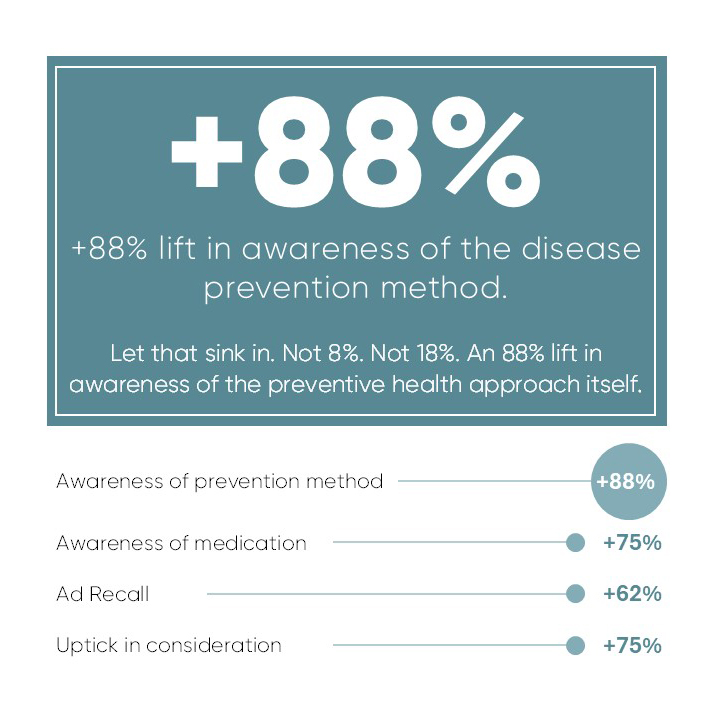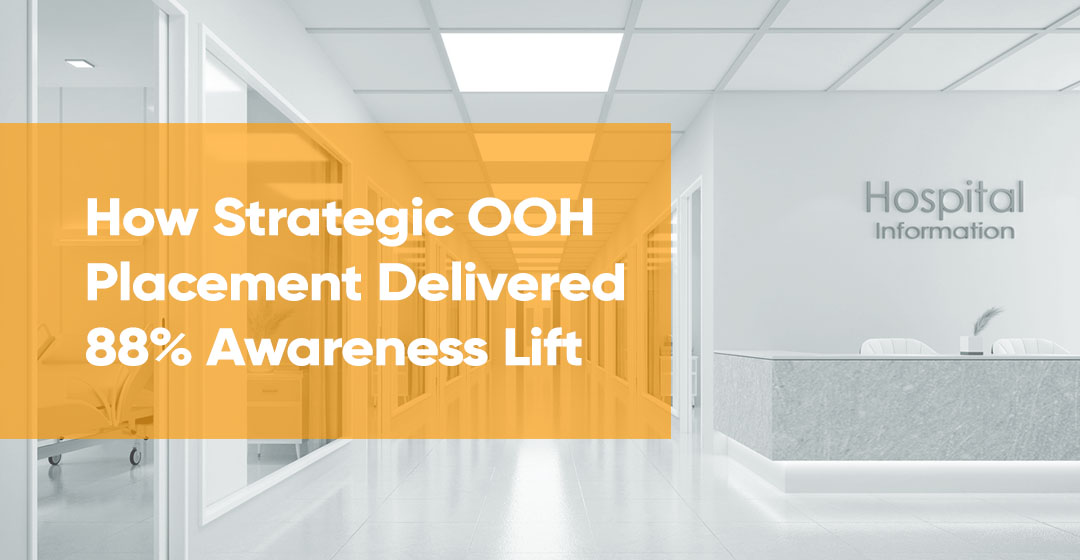Suppose you’ve hesitated to recommend out-of-home advertising because it feels too “old school” or you were challenged by the prospect of demonstrating the effectiveness of strategic OOH placement. In that case, this case study might change your mind. Spoiler alert: OOH isn’t just alive and well—when executed strategically, it delivers knockout results that digital channels would envy.
The Challenge: Reaching Communities Where It Matters Most
A leading pharmaceutical provider faced a common but critical challenge: how to boost awareness of an essential preventive health medication among specific communities that needed it most. This wasn’t about broad stroke awareness among a general audience with generic health messaging. It required an element of cultural fluency, strategic OOH placement, and the kind of visibility that meets people in their everyday lives.
Enter out-of-home media—the channel that transforms ordinary spaces into opportunities for meaningful connection, and is a powerful tool for delivering important healthcare information to potential patients.
The Game Plan: Strategic OOH Placement Meets Cultural Relevance
Working with EMC Outdoor, a specialist with 30+ years in the OOH space, the campaign launched across six key, high-impact markets: Philadelphia, New Orleans, Washington D.C., Houston, Dallas–Fort Worth, and New York City. Each market was selected based on deep demographic research and its ability to reach a large portion of the target audience.
But here’s where it gets interesting. Instead of defaulting to traditional billboards, which can deliver large scale reach, the team deployed a diverse media mix designed to reach people in lifestyle environments where they were already engaged and receptive. The media included:
- Bars and restaurants where communities gather socially
- Fitness centers and locker rooms where health and wellness are top of mind
- Barbershops and beauty establishments that serve as cultural hubs
- Doctor’s offices where healthcare conversations naturally happen
- Convenience stores for everyday touchpoints
- Local event activations to connect during culturally significant moments
- Wrapped rideshare vehicles that could move through targeted neighborhoods, and supplement the place-based media
The campaign mixed both static and digital formats, maximizing flexibility and impact across different environments. This was strategic OOH placement—every choice was intentional, designed to blend into the natural flow of the target audience’s daily routines while delivering important health information in approachable, timely ways.
The Results: When OOH Delivers, It Really Delivers
Here’s the part where we get to drop some impressive numbers. A brand awareness study conducted around the NYC audience provided clear evidence of the campaign’s effectiveness:
+88% awareness of the disease prevention method
Let that sink in. Not 8%. Not 18%. An 88% lift in awareness of the preventive health approach itself.
+75% awareness of the medication
75% increase in awareness of the specific medication. For a healthcare product that relies on informed decision-making, this level of awareness translates to real value.
+62% ad recall
This metric matters because it demonstrates that the creative and placements didn’t just generate passive impressions—people actually remembered seeing the ads.
33% uptick in consideration
Perhaps most importantly, among those exposed to the campaign, consideration of using the prevention method increased by 33%. This isn’t a vanity metric—this is movement toward actual behavior change and real-world health outcomes that shows how strategic OOH placement can directly impact audience behavior.

Why This Strategic OOH Placement Worked (And What You Can Learn From It)
Let’s break down the winning formula:
1. Placement with Purpose
Generic “spray and pray” doesn’t work if you have a very specific message for a very specific audience. This campaign succeeded because every venue was chosen to reach the target audience in environments where they were already present, relaxed, and receptive. Fitness centers and doctor’s offices aren’t just locations—they’re mindsets. People are already thinking about health and wellness in these spaces.
2. Cultural Fluency
The campaign didn’t just target demographics—it understood communities. Strategic OOH placement means planning activations around culturally relevant events and key neighborhoods demonstrated authentic engagement, not opportunistic marketing. When your audience feels seen and respected, they develop trust.
3. Format Diversity Is Key For Strategic OOH Placement
Static media, digital displays, wrapped vehicles, and event activations created multiple touchpoints across different contexts. Using multiple formats increased frequency and reinforced messaging without feeling repetitive. Numerous studies have shown that using multiple formats dramatically increases the ROI of a campaign.
4. Real-World Integration
OOH lives in the physical world where your customers actually exist. These ads weren’t competing with infinite browser tabs or social feeds. They occupied space in the real environments where people eat, exercise, socialize, and seek healthcare.
The Takeaway for Your Next Campaign
If you’ve been treating OOH as a legacy channel or relegating it to “brand awareness only” status, it’s time to reconsider. This case study proves that thoughtful, strategic OOH placement can deliver:
- Measurable awareness lifts that rival or exceed digital channels
- Strong ad recall in an attention-scarce environment
- Actual consideration and behavior change among target audiences
- Cultural relevance that builds trust with specific communities
The key is partnering with OOH specialists who understand that modern out-of-home isn’t about buying billboards—it’s about strategic placement, cultural intelligence, and creating meaningful touchpoints in the physical spaces where your audiences live their lives.
When you combine the right locations, the right creative, and the right cultural understanding, OOH becomes more than just impressions. It becomes a powerful force for awareness, education, and action. And, it’s not only effective, it’s cost-effective.
Ready to add OOH to your media mix? The data speaks for itself: strategic out-of-home delivers real results for brands willing to move beyond generic placements and embrace culturally intelligent, purpose-driven campaigns.
The bottom line: Done right, OOH doesn’t just reach people—it connects with them in moments that matter, driving awareness and behavior change that measurably impact your bottom line and, in cases like this, contribute to meaningful public health outcomes.

